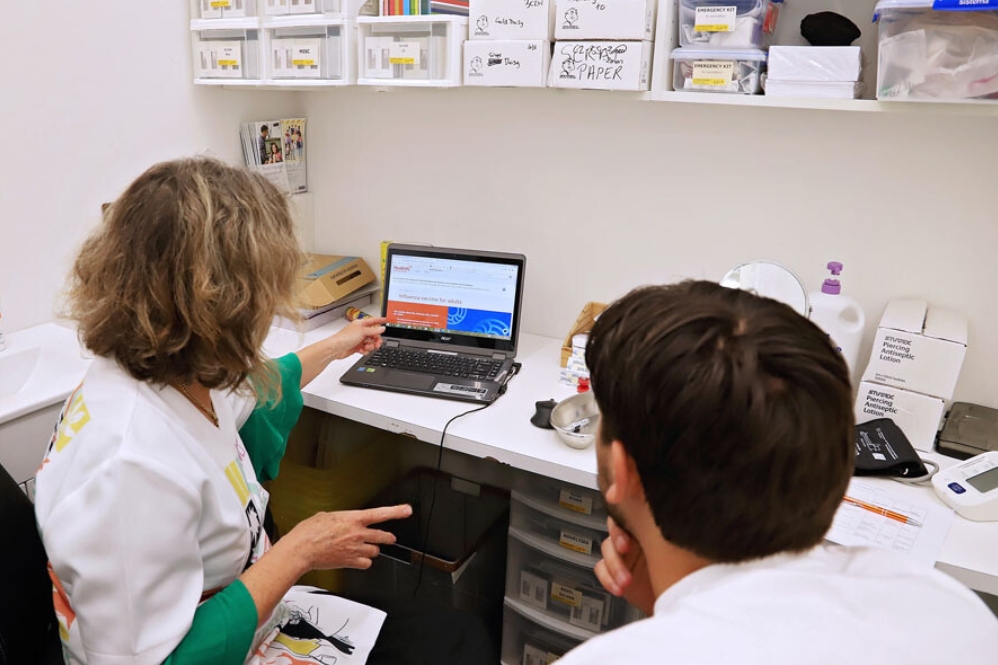Pirfenidone
Sounds like 'pir-FEN-i-done'
Key points about pirfenidone
- Pirfenidone is used to treat a lung disease called idiopathic pulmonary fibrosis. It helps to slow down the development of scarring (fibrosis) in the lungs.
- Pirfenidone is also called Esbriet.
- Find out how to take it safely and possible side effects.

Pirfenidone is used to treat idiopathic pulmonary fibrosis, a condition in which the lungs become scarred and stiff, making it hard to breathe.
Pirfenidone is an anti-fibrotic medicine, which slows down the process of scarring in the lungs by reducing the activity of the immune system.
Pirfenidone won’t cure your lung condition or reverse any existing scarring, but it can slow down the progression of the condition. Therefore, once you begin taking pirfenidone, you may not “feel” different because pirfenidone does not treat the symptoms of idiopathic pulmonary fibrosis and does not reverse the scarring already in your lungs. Learn more about idiopathic pulmonary fibrosis.
In Aotearoa New Zealand pirfenidone is available as tablets, which come in different strengths 267 mg, 534 mg and 801 mg.
Pirfenidone is started at a low dose and slowly increased over a few weeks, to reduce the risk of side effects.
- Week one: 267 mg three times a day for one week.
- Week two: 534 mg three times a day for one week.
- Week three and onwards: 801 mg three times a day
Always take your pirfenidone exactly as your doctor has told you. The pharmacy label on your medicine will tell you how much to take, how often to take it and any special instructions.
- Timing of your doses: Pirfenidone is usually taken 3 times a day. Try to take your dose at the same time each day. Pirfenidone is best taken with food, at breakfast, lunch and dinner.
- Swallow your tablets whole with a drink of water: Don't break, chew or crush the tablets.
- Missed dose: If you forget to take your pirfenidone dose, take it as soon as you remember. But , separate each dose by 3 hours. Don't take 2 doses at the same time and don't take more than 3 doses per day.
- Keep taking pirfenidone regularly: If your condition gets worse and your lung capacity falls by 10% or more within a year, the medicine will usually be stopped.
Here are some things to know when you're taking pirfenidone. Other things may be important as well, so ask your healthcare provider what you should know about.
Don't smoke while you are taking pirfenidone
You should stop smoking before you start taking pirfenidone and avoid smoking during your treatment. Cigarette smoking decreases blood levels of this medicine. Tell your doctor if you smoke or if you have recently stopped smoking.
Tests and monitoring
While you're taking pirfenidone, you will need regular blood tests to monitor for side effects and to check whether the treatment is working. Blood tests are very important during the first few months of treatment. Over time, these tests are needed less often.
Avoid grapefruit
It's best not to drink grapefruit juice or eat grapefruit as it may increase blood levels of pirfenidone and lead to more side effects.
Other medicines
Pirfenidone may interact with some medicines and herbal supplements, so check with your doctor or pharmacist before starting pirfenidone or before starting any new medicines, including those you may buy over-the-counter.
Sun protection
Pirfenidone makes your skin more sensitive to the sun. Protect your skin when you're in the sun, especially between 10am and 3pm. Wear protective clothing and use a high factor sunscreen (SPF 30+) when you're outside.
Pregnant
If you become pregnant, tell your doctor immediately.
Like all medicines, pirfenidone can cause side effects, although not everyone gets them. Often side effects improve as your body gets used to the new medicine.
| Side effects | What should I do? |
|---|---|
|
|
|
|
|
|
|
|
For more information on side effects, see the Medsafe consumer information leaflet Esbriet(external link). |
|
Read more about medicines and side effects and reporting a reaction you think might be a side effect.
The following links have more information about pirfenidone.
Esbriet(external link) Consumer Information Sheet, Medsafe, NZ
References
- Pirfenidone(external link) NZ Formulary
Brochures

Medicines and side effects
Healthify He Puna Waiora, NZ, 2024

Health Quality and Safety Commission, NZ, 2019 English, te reo Māori
Credits: Sandra Ponen, Pharmacist, Healthify He Puna Waiora. Healthify is brought to you by Health Navigator Charitable Trust.
Reviewed by: Angela Lambie, Pharmacist, Auckland
Last reviewed:





